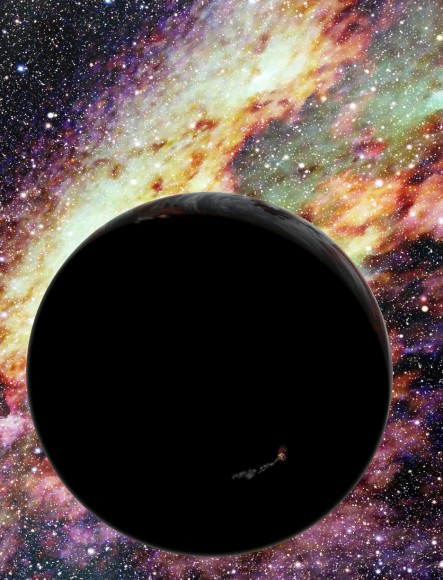
Artist’s conception of a runaway planet zooming through interstellar space. A glowing volcano on the planet’s surface hints at active plate tectonics that may keep the planet warm.
Image Credit: David A. Aguilar (CfA)
Image Credit: David A. Aguilar (CfA)
Nearly ten years ago, astronomers were stunned to discover a star that had been apparently flung from its own system and travelling at over a million kilometers per hour. Over the years, a question was brought up: If stars can be ejected at a high velocity, what about planets?
Avi Loeb (Harvard-Smithsonian Center for Astrophysics) states, “These warp-speed planets would be some of the fastest objects in our Galaxy. If you lived on one of them, you’d be in for a wild ride from the center of the galaxy to the Universe at large.”
Idan Ginsburg (Dartmouth College) adds, “Other than subatomic particles, I don’t know of anything leaving our galaxy as fast as these runaway planets.”
The mechanics responsible for the super-fast planets are similar to those responsible for “hypervelocity” stars. With stars, if a binary system drifts too closely to a supermassive black hole (such as the ones in the center of galaxies), the gravitational forces can separate the stars – sending one outward at incredible speeds, and the other in orbit around the black hole. Interestingly enough, “Warp Speed” planets can theoretically travel at a few percent of the speed of light – not quite as fast as Star Trek’s Enterprise, but you get the point.
The team, which includes Loeb and Ginsburg, created computer models to simulate the outcome if each star had planets orbiting it. The outcome of the model showed that the star shot into interstellar space would keep its planets, but the star “captured” into orbit around the black hole would have its planets stripped and sent outward at incredible speeds. Typical speeds for the planets range from 11-16 million kilometers per hour, but given the proper conditions could approach even higher velocities.
As of now, it’s impossible for astronomers to detect a wandering planet due to their small size, distance, and rarity. By detecting the dimming of light levels from a hypervelocity star as an orbiting planet crosses its face, astronomers could detect planets that orbit said star.
Ginsburg added, “With one-in-two odds of seeing a transit, if a hypervelocity star had a planet, it makes a lot of sense to watch for them.”
Loeb concluded with, “Travel agencies advertising journeys on hypervelocity planets might appeal to particularly adventurous individuals.”
If you’d like to learn more about hypervelocity planets, you can access a draft version of the upcoming paper at: http://arxiv.org/abs/1201.1446
Harvard-Smithsonian Center for Astrophysics , Hypervelocity Planets and Transits Around Hypervelocity Stars
Source: Universe Today
No hay comentarios:
Publicar un comentario